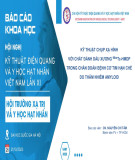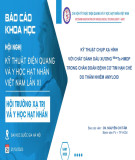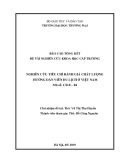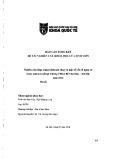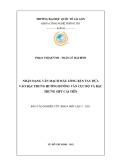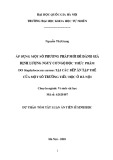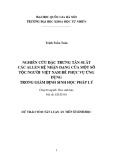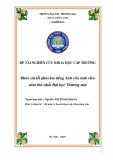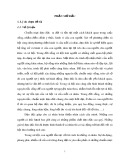
Open Access
Available online http://ccforum.com/content/11/5/R96
Page 1 of 10
(page number not for citation purposes)
Vol 11 No 5
Research
Clinical risk conditions for acute lung injury in the intensive care
unit and hospital ward: a prospective observational study
NiallDFerguson
1, Fernando Frutos-Vivar2, Andrés Esteban2, Federico Gordo3, Teresa Honrubia4,
Oscar Peñuelas2, Alejandro Algora3, Gema García4, Alejandra Bustos2 and Inmaculada Rodríguez2
1Interdepartmental Division of Critical Care Medicine, and Department of Medicine, Division of Respirology, University Health Network, University of
Toronto, 399 Bathurst Street, F2-150, Toronto, Ontario M5T 2S8, Canada
2Intensive Care Unit, Hospital Universitario de Getafe, CIBER de Enfermades Respiratorios, Carretera de Toledo Km 12,500, 28905 Madrid, Spain
3Intensive Care Unit, Fundacíon Hospital de Alcorcón, c/Budapest 1, 28922 Alcorcón, Madrid, Spain
4Intensive Care Unit, Hospital de Móstoles, c/Río Jucar, 28935 Móstoles, Madrid, Spain
Corresponding author: Niall D Ferguson, n.ferguson@utoronto.ca
Received: 21 Dec 2006 Revisions requested: 14 Feb 2007 Revisions received: 23 Aug 2007 Accepted: 4 Sep 2007 Published: 4 Sep 2007
Critical Care 2007, 11:R96 (doi:10.1186/cc6113)
This article is online at: http://ccforum.com/content/11/5/R96
© 2007 Ferguson et al.; licensee BioMed Central Ltd.
This is an open access article distributed under the terms of the Creative Commons Attribution License (http://creativecommons.org/licenses/by/2.0),
which permits unrestricted use, distribution, and reproduction in any medium, provided the original work is properly cited.
Abstract
Background Little is known about the development of acute
lung injury outside the intensive care unit. We set out to
document the following: the association between predefined
clinical conditions and the development of acute lung injury by
using the American–European consensus definition; the
frequency of lung injury development outside the intensive care
unit; and the temporal relationship between antecedent clinical
risk conditions, intensive care admission, and diagnosis of lung
injury.
Methods We conducted a 4-month prospective observational
study in three Spanish teaching hospitals, enrolling consecutive
patients who developed clinical conditions previously linked to
lung injury, both inside and outside the intensive care unit.
Patients were followed prospectively for outcomes, including
the diagnosis of acute lung injury or acute respiratory distress
syndrome.
Results A total 815 patients were identified with at least one
clinical insult; the most common were sepsis, pneumonia, and
pancreatitis. Pulmonary risk conditions were observed in 30% of
cases. Fifty-three patients (6.5%) developed acute lung injury;
33 of these (4.0%) met criteria for acute respiratory distress
syndrome. Lung injury occurred most commonly in the setting of
sepsis (46/53; 86.7%), but shock (21/59; 36%) and
pneumonia (20/211; 9.5%) portended the highest proportional
risk; this risk was higher in patients with increasing numbers of
clinical risk conditions (2.2%, 14%, and 21% (P < 0.001) in
patients with one, two, and three conditions, respectively).
Median days (interquartile range) from risk condition to
diagnosis of lung injury was shorter with pulmonary (0 (0 to 2))
versus extrapulmonary (3 (1 to 5)) (P = 0.029) risk conditions.
Admission to the intensive care unit was provided to 9/20 (45%)
patients with acute lung injury and to 29/33 (88%) of those with
acute respiratory distress syndrome. Lung injury patients had
higher mortality than others (acute lung injury 25.0%; acute
respiratory distress syndrome 45.5%; others 10.3%; P <
0.001).
Conclusion The time course from clinical insult to diagnosis of
lung injury was rapid, but may be longer for extrapulmonary
cases. Some patients with lung injury receive care and die
outside the intensive care unit; this observation needs further
study.
Introduction
Conceptually, acute respiratory distress syndrome (ARDS) is
an inflammatory lung injury involving both endothelial and epi-
thelial layers of the alveolar-capillary membrane, with subse-
quent alveolar flooding and formation of a hyaline membrane,
arising either from a direct (pulmonary) or indirect (extrapulmo-
nary) insult [1-6]. In clinical practice and in research studies,
this ARDS concept is most commonly captured by using the
AECC = American–European consensus conference; ALI = acute lung injury; ARDS = acute respiratory distress syndrome; CI = confidence interval;
FiO2 = fractional concentration of inspired oxygen; ICU = intensive care unit; PaO2 = partial pressure of arterial oxygen.

Critical Care Vol 11 No 5 Ferguson et al.
Page 2 of 10
(page number not for citation purposes)
1994 American–European Consensus Conference (AECC)
definition [3,7-9]. Acute lung injury (ALI) is defined as the
acute onset of hypoxemia (PaO2/FiO2 (partial pressure of arte-
rial oxygen/fractional concentration of inspired oxygen) ≤ 300
mmHg) and bilateral infiltrates on frontal chest X-ray, in the
absence of left atrial hypertension. ARDS comprises the
severe end of the ALI spectrum, defined with the same criteria,
except that the hypoxemia threshold is 200 mmHg [3].
In recent years several multicentre observational studies have
examined ARDS epidemiology in terms of incidence, risk fac-
tors, and associations with mortality [7,9-16]. All of these stud-
ies, however, examined antecedent clinical insults from the
perspective of patients with ALI or ARDS, reporting the pro-
portion of cases that were due, for example, to pneumonia or
sepsis. Studies examining these associations from the per-
spective of patients at risk of ALI/ARDS are both less preva-
lent and less recent, all reporting data collected in the early
1980s [17-19]. Because of the time at which they were per-
formed, none of these studies was able to use current clinical
definitions for ALI/ARDS or other clinical entities such as sep-
sis syndrome [20]. In addition, all of the studies outlined above
identified patients who were admitted to an intensive care unit
(ICU) [7,9-15,17-19]. As suggested in a recent editorial, it
may be reasonable to assume that most patients with ARDS
need treatment in an ICU, but many patients with milder ALI
may not receive care in an ICU for medical or non-medical rea-
sons; little is known about these patients [21].
We therefore performed a prospective observational study
with the following objectives: to document the association
between predefined clinical conditions and the development
of ALI/ARDS by using the AECC definitions; to document the
frequency of ALI/ARDS development outside the ICU; and to
document the temporal relationship between antecedent clin-
ical risk conditions, admission to the ICU, and diagnosis of
ALI/ARDS.
Methods
Ethical considerations
The ethics committee at each participating hospital approved
the study and waived the need for informed consent.
Patients
Patients were recruited from three hospitals in the south of the
Comunidad de Madrid, Madrid, Spain, from 1 March to 30
June 2003. This study duration was chosen on the basis of
resources available for data collection. These three general
hospitals each have tertiary ICUs and residency training pro-
grams. They service adjacent, well-defined geographic areas;
on the basis of 2001 census data they include a total of
573,149 individuals older than 18 years of age [22]. The usual
practice in the Comunidad de Madrid is for patients to present
to or be transferred to their geographically assigned hospital
when acute care admission is required.
We screened patients who were admitted to an ICU or hospi-
tal ward and enrolled them if they were admitted with or devel-
oped one or more clinical conditions previously reported to be
linked to the development of ARDS [3,9,19,20,23], defined by
using standard definitions (see Tables 1, 2, 3 for details)
[3,24-27]. Patients with pneumonia, aspiration of gastric con-
tents, pulmonary contusion, near-drowning, or inhalational
injury were grouped as pulmonary cases; others were extrapul-
monary. We excluded patients who were younger than 18
years, discharged from hospital alive within 48 hours of admis-
sion, transferred from another hospital with a pre-existing diag-
nosis of ALI/ARDS, or previously enrolled in the study cohort.
In the medical–surgical ICUs and each at-risk ward area, all
admitted patients were actively screened for the presence of
these clinical conditions associated with ARDS by physician
co-investigators, who reviewed admission records and patient
charts and liaised with nurses and physicians on each ward to
identify patients with these clinical risk conditions.
Cohort follow-up and data collection
Enrolled patients were followed daily for the development of
ALI/ARDS [3]. In addition, until the development of ALI/ARDS,
we continued to screen enrolled patients daily for the develop-
ment of other clinical risk conditions. Screening for ALI/ARDS
diagnosis was continued for 7 days unless another clinical
insult developed, in which case follow-up was continued for a
total of 14 days. When a diagnosis of ALI was made we con-
tinued to follow patients daily to document potential conver-
sion to ARDS.
At the time of enrolment we recorded demographic data, the
reason for admission to hospital, previous comorbidity status
(McCabe score), whether their admission was medical or sur-
gical, their location before admission (home, other acute hos-
pital, or chronic hospital), and the presence of comorbidities.
In addition, data on each patient was collected at up to four
distinct time points (if they occurred and were separated by at
least 12 hours): time of clinical insult identification (enrolment);
time of admission to ICU; time of endotracheal intubation; and
time of development of ALI/ARDS. At each of these time
points we recorded as much of the following information as
was available: severity of illness (simplified acute physiology
score (SAPS) II); number of organ failures and multiple organ
dysfunction (MODS) score; hemodynamic data (heart rate,
mean arterial pressure, central venous pressure, pulmonary
artery wedge pressure, pulmonary artery pressure, and car-
diac index); ventilatory data (FiO2, respiratory rate, ventilator
mode, tidal volume, positive end-expiratory pressure, peak
inspiratory pressure, and inspiratory/expiratory ratio); and arte-
rial blood gases. All enrolled patients were followed to capture
relevant outcome data, including hospital mortality and length
of hospital stay, and if applicable, mortality in ICU, the length
of stay in the ICU, and the duration of mechanical ventilation.

Available online http://ccforum.com/content/11/5/R96
Page 3 of 10
(page number not for citation purposes)
Data coordination and quality assurance
We held monthly meetings between physicians at all centres,
including the coordinating centre (Hospital Universitario de
Getafe), to address issues or problems with definitions or
enrolment. Case report forms were sent to the coordinating
centre and were double-entered into a database. Blank fields
or improbable values generated queries that were returned to
each centre for correction. The coordinating centre selected a
random 10% sample of surveyed patients at each hospital,
and data were re-abstracted from the medical records by
study personnel from one of the other hospitals to ensure
validity.
Statistical analysis
Results are expressed as medians and interquartile range, or
proportions with 95% confidence intervals (CI) as appropriate.
We used the Mann–Whitney U test to compare continuous
variables, and the χ2 test or Fisher's exact test to compare pro-
Table 1
Baseline characteristics and clinical risk conditions: ICU and ward
Characteristic or condition All patients ICU admissions Non-ICU admissions Pa
Number 815 108 707
Age, years; median (interquartile range) 74 (55–83) 66 (48–78) 74 (56–84) <0.001
Female sex, n (percentage) 450 (55.2) 61 (56.5) 389 (55.0) 0.836
McCabe score
Non-fatal 618 (75.8) 81 (75.0) 537 (76.0)
Ultimately fatal 178 (21.8) 25 (23.1) 153 (21.6) 0.894
Fatal 19 (2.3) 2 (1.9) 17 (2.4)
Medical (versus surgical) admission 663 (81.3) 56 (51.9) 607 (85.9) <0.001
Clinical risk conditions, n (percentage)
Sepsis 704 (86.4) 84 (77.8) 620 (87.7) 0.005
Pneumonia 233 (28.6) 30 (27.8) 203 (28.7) 0.841
Aspiration 16 (2.0) 1 (0.9) 15 (2.1) 0.709
Trauma 21 (2.6) 3 (2.8) 18 (2.5) 0.751
Transfusions 9 (1.1) 8 (7.4) 1 (0.1) <0.001
Pancreatitis 75 (9.2) 3 (2.8) 72 (10.2) 0.011
Pulmonary contusion 3 (0.4) 2 (1.9) 1 (0.1) 0.048
Shock 59 (7.2) 51 (47.2) 8 (1.1) <0.001
Other 2 (0.2) 2 (1.9) 0 0.017
Any pulmonary insult 244 (29.9) 34 (31.5) 210 (29.7) 0.707
On day of clinical risk development, median (IQR) or n (percentage)
SAPS II 26 (18–33) 40 (27–49) 28 (22–35) <0.001
MAP 84 (74.8–95) 70 (56–83) 89 (77.8–100) <0.001
GCS 15 (15–15) 15 (15–15) 15 (15–15) 0.647
PaO2/FiO2, mmHg 261.9 (221–310) 217.1 (158–323) 266.7 (238–314) <0.001
Vasoactive drugs 40 (4.9) 40 (37.0) 0 <0.001
Mechanical ventilation 46 (5.6) 46 (42.6) 0 <0.001
Location (on ward) 730 (89.6) 23 (21.5) 707 (100) <0.001
MODS score 1.0 (0–3) 5 (3–7) 2 (1–3) <0.001
Days from hospital admission to insult 0 (0–1) 0 (0–5) 0 (0–0) 0.041
ALI diagnosis 20 (2.5) 9 (8.3) 11 (1.6) <0.001
ARDS diagnosis 33 (4.0) 29 (26.8) 4 (0.6) <0.001
ICU, intensive care unit; IQR, interquartile range; ALI, acute lung injury (PaO2/FiO2 200 to 300 mmHg); ARDS, acute respiratory distress syndrome; SAPS, simplified
acute physiology score; MAP, mean arterial pressure; GCS, Glasgow coma score; PaO2, partial pressure of arterial oxygen; FiO2, fractional concentration of inspired
oxygen; MODS, multiple organ dysfunction syndrome. aComparing ICU admissions with non-ICU admissions

Critical Care Vol 11 No 5 Ferguson et al.
Page 4 of 10
(page number not for citation purposes)
portions, as appropriate. Two-tailed P values of less than 0.05
were used to indicate statistical significance. If patients initially
presented with ALI and then went on to develop ARDS, we
included them only in the ARDS group. Times to diagnosis of
ALI/ARDS were compared by using a Kaplan–Meier survival
analysis. All analyses were conducted with SPSS version 12.0
(SPSS Inc., Chicago, IL).
Results
Patients
During the 4-month study period a total of 15,852 adults were
admitted to the three hospitals, 815 (5.1%) of whom were
enrolled after being identified with at least one clinical condi-
tion linked to ALI/ARDS; 108 (13.3%) received care in the
ICU, whereas 707 (86.7%) were cared for only on another
ward (Figure 1). Demographic information and data collected
on the day that the clinical insult was identified are displayed
in Table 1. Sepsis syndrome was the most clinical insult, seen
Table 2
Characteristics at diagnosis of ALI/ARDS
Characteristic ALI ARDS P
Number 20 33
Age, years; median (interquartile range) 70.5 (42–81.8) 60.5 (46.5–79.3) 0.436
Female sex, n (percentage) 13 (65.0) 21 (63.6) 1
McCabe score
Non-fatal 14 (70.0) 23 (69.7)
Ultimately fatal 5 (25.0) 9 (27.3) 0.927
Fatal 1 (5.0) 1 (3.0)
Medical (versus surgical) admission 13 (65.0) 20 (60.6) 0.369
Antecedent clinical risk conditions, n (percentage)
Sepsis 16 (80.0) 30 (90.9) 0.405
Pneumonia 10 (50.0) 15 (45.5) 0.783
Aspiration 1 (5.0) 1 (3.0) 1
Trauma 001
Transfusions 2 (10.0) 1 (3.0) 0.549
Pancreatitis 01 (3.0)1
Pulmonary contusion 0 0 1
Shock 6 (30.0) 15 (45.5) 0.386
Other 1 (5.0) 0 0.377
On day of clinical risk development, median (IQR) or n (percentage)
SAPS II 37.5 (24.0–47.8) 37 (28.0–41.5) 0.604
Mean arterial pressure (mmHg) 86 (71–103) 73 (65–85) 0.076
Multiple organ dysfunction score 2 (1–3.75) 6 (4–7) 0.008
Location, percentage on ward versus ICU 12 (60) 5 (15.2) 0.002
PaO2/FiO2, mmHg 229 (210–264) 98 (78.5–146) <0.001
Receiving mechanical ventilation, percentage 7 (35) 22 (66.7) 0.045
Tidal volume (ml) 600 (500–600) 550 (500–600) 0.615
Positive end-expiratory pressure, cmH2O 5 (5–8) 8 (5–10.5) 0.086
Ventilator mode, percentage volume-cycled ventilation 7 (100) 20 (91) 1
Days from clinical insult to ALI/ARDS diagnosis 0 (0–3) 2 (0–4) 0.14
ICU, intensive care unit; ALI, acute lung injury (PaO2/FiO2 200 to 300 mmHg); ARDS, acute respiratory distress syndrome; SAPS, simplified
acute physiology score; PaO2, partial pressure of arterial oxygen; FiO2, fractional concentration of inspired oxygen.

Available online http://ccforum.com/content/11/5/R96
Page 5 of 10
(page number not for citation purposes)
in 86% of cases, with pneumonia being next most frequent at
29% (although these categories were not mutually exclusive).
ALI/ARDS risk by clinical insult
A total of 53 patients (6.5%; 95% CI 5.0 to 8.4%) developed
ALI/ARDS, 20 (2.4%) with ALI and 33 (4.0%) with ARDS.
Three of the 33 patients with ARDS initially presented with ALI
and then went on to ARDS after 1 day in two cases, and after
4 days in the third patient. These rates correspond to
incidences of 27.7, 10.5, and 17.3 cases per 100,000 popu-
lation per year for ALI/ARDS, ALI, and ARDS, respectively.
When only ICU cases are considered these rates are lower, at
19.9, 4.7, and 15.2 cases per 100,000 population per year,
respectively.
By definition, patients with ARDS had worse hypoxemia than
patients with ALI; patients with ARDS were also more likely to
be diagnosed in the ICU and to be receiving mechanical ven-
tilation at the time of diagnosis (Table 2). Figure 2a displays
the proportion of patients with each antecedent clinical condi-
tion who went on to develop ALI or ARDS. The likelihood of
developing ALI/ARDS was not equal between pulmonary and
extrapulmonary risk conditions (37/244 (15.2%) versus 26/
571 (4.6%); P < 0.001), nor among the mutually exclusive
groupings risk conditions of shock 21/59 (35.6%), pneumonia
without shock 20/211 (9.5%), and non-pulmonary sepsis
without shock 6/432 (1.4%; P < 0.001). Examining only ICU
patients (Figure 2b) leads to a much higher assessment of risk
for each clinical insult. The frequency of ALI/ARDS also
increased with the presence of an increasing number of clini-
cal risk conditions (2.2%, 13.9%, and 20.8% for one, two, and
three clinical conditions, respectively; P < 0.001).
ALI/ARDS timelines and outcomes
A diagnosis of ALI/ARDS was made after a median of 1 day
(interquartile range 0 to 4 days) from the day of clinical insult
in all patients (Figure 3a), and was not statistically different
between patients with ALI and those with ARDS (Table 2). In
contrast, patients who developed ALI/ARDS with pulmonary
conditions did so more quickly than extrapulmonary patients
(median 0 (interquartile range 0 to 2) versus 3 (1 to 5) days; P
= 0.001; Figure 3b).
Patients with ARDS received ICU care significantly more fre-
quently than patients with ALI (29/33 (88%) versus 9/20
(45%); P = 0.001), although the durations of ICU stay (ARDS
15 (7.5 to 36.5) versus ALI 7 (5.25 to 22.5) days; P = 0.16)
and the times from ICU admission to diagnosis of ALI/ARDS
(ARDS 1 (0 to 3.5) versus ALI 3 (0 to 4.5) days; P = 0.81)
were not significantly different between these groups. Group-
ing together all patients with ALI/ARDS admitted to the ICU,
Figure 4 shows the frequency histograms for the timing of ICU
admission relative to development of the first clinical insult
(upper panel), and diagnosis of ALI/ARDS relative to ICU
admission (lower panel); on average, patients were admitted
to the ICU on the day that their clinical insult developed, and
they were diagnosed with ALI/ARDS 1 day later.
Table 3
Outcomes by patient group
Outcome All patients ICU admissions Non-ICU
admissions
PaALI ARDS Pb
ICU mortality 25/108 (23.1) 25/108 (23.1) N/A 2/9 (22.2) 12/29 (41.4) 0.438
ICU length of stay 8 (4–19.5) (n = 104) 8 (4–19.5) (n = 104) N/A 7.5 (5.3–22.5) 15 (7.5–36.5) 0.161
Duration of ventilation 7.5 (4–23) (n = 60) 7.5 (4–23) (n = 60) N/A 6 (3–10) 17 (12–36.8) 0.035
Hospital mortality 99/815 (12.1) 29/108 (26.9) 70/707 (9.9) <0.001 5/20 (25.0) 15/33 (45.5) 0.158
Hospital length of stay 10.0 (7–17) 21 (12–37.5) 9 (6–15) <0.001 17 (10.0–42.0) 29 (13.3–63.8) 0.124
Cause of death
Multiple organ failure 25 (25.3) 8 (27.6) 17 (24.3) 0.579 1 (20) 4 (26.7) 0.707
Refractory
hypotension
1 (1.0) 0 1 (1.4) 0 0
Refractory hypoxemia 4 (4.0) 1 (3.4) 3 (4.3) 0 1 (6.7)
Arrhythmia 2 (2.0) 1 (3.4) 1 (1.4) 0 0
Withholding-
withdrawal
58 (58.6) 14 (48.3) 44 (62.9) 4 (80) 7 (46.7)
Brain death 2 (2.0) 1 (3.4) 1 (1.4) 0 1 (6.7)
Other 7 (7.1) 4 (13.8) 3 (4.3) 0 2 (13.3)
ICU, intensive care unit; ALI, acute lung injury (PaO2/FiO2 200 to 300 mmHg); ARDS, acute respiratory distress syndrome; PaO2, partial pressure
of arterial oxygen; FiO2, fractional concentration of inspired oxygen. aComparing ICU admissions with non-ICU admissions; bcomparing ALI with
ARDS.


